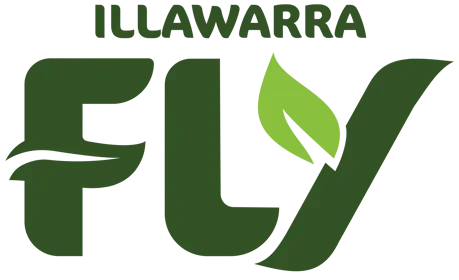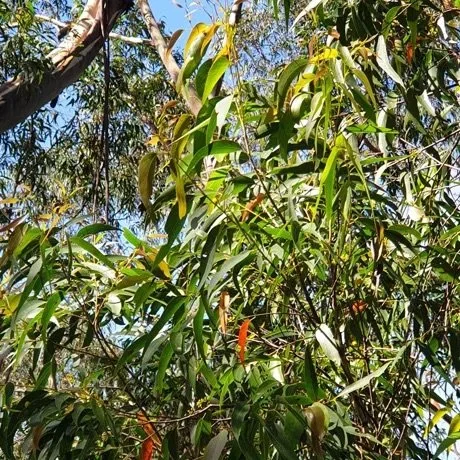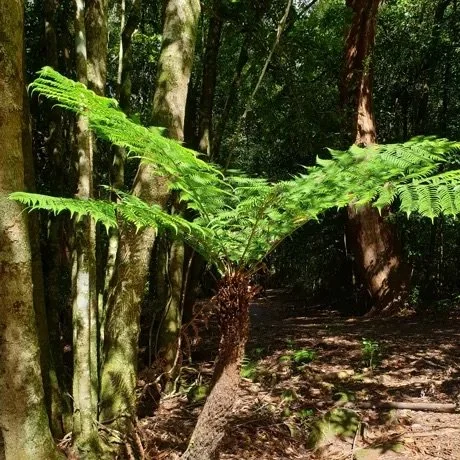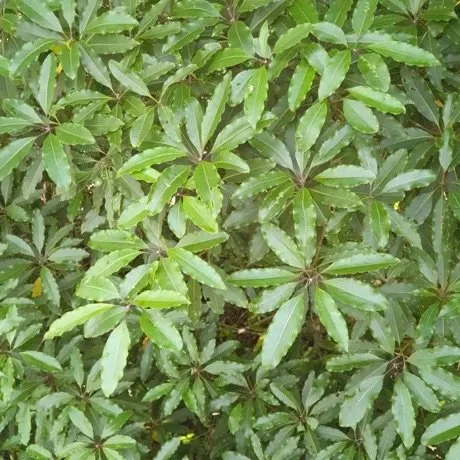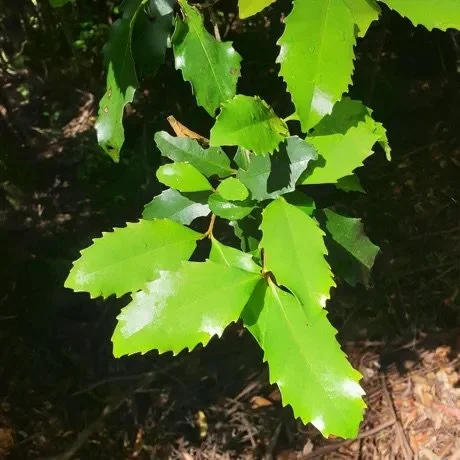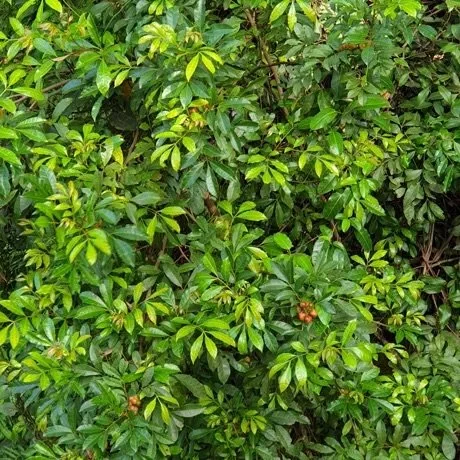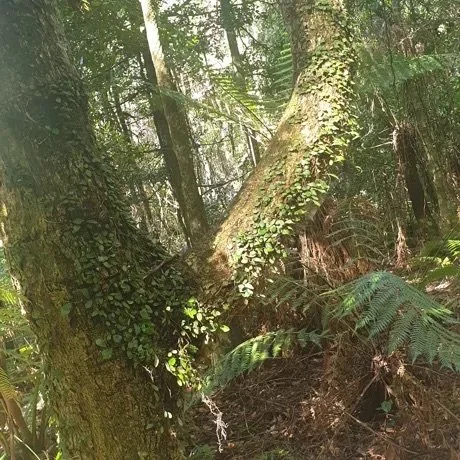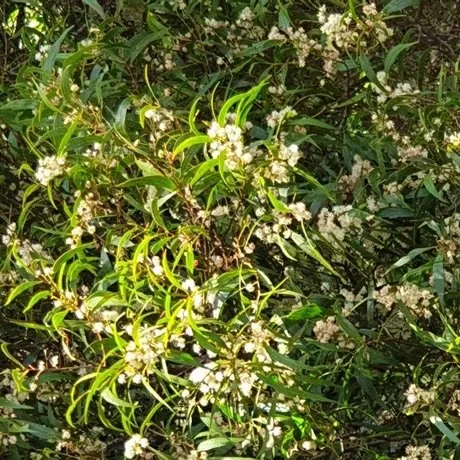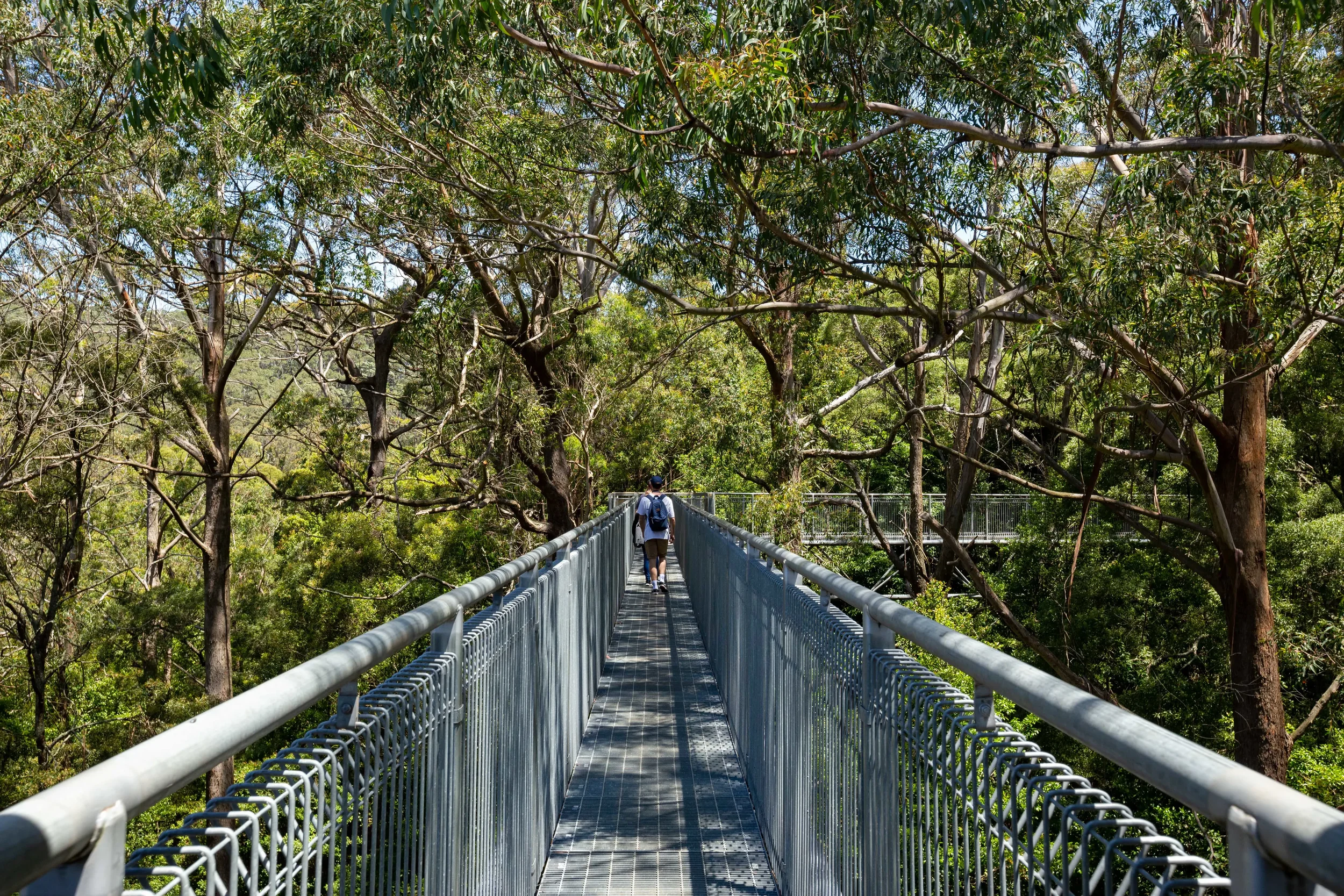
Flora at Illawarra Fly
Eucalypts
Two large Eucalypt tree species grow in the forest at Illawarra Fly. Brown Barrel (Eucalyptus Fastigata), is the most common, with rich brown bark on the trunk and smooth bark on the upper branches. At maturity level and in ideal conditions they can grow to more than 40 metres. The other large Eucalypt species, Gully Gum (Eucalyptus Smithii), can be seen near the edge of the escarpment. It has a hard lower bark, with smooth bark higher up that falls off in long streamers and gets caught up in the branches.
Tree Ferns
The lush and decorative fronds of the Tree Ferns seen below the Illawarra Fly reflect the cool, moist forest growing in this area. Two Tree Fern species can be found at Illawarra Fly, the Soft Tree Fern (Dicksonia Antarctica) and the Rough Tree Fern (Cyathea Australis). The name gives the game away.
Musk Daisy-Bush
Musk Daisy-bush (Olearia Argophylla), grows as a bushy shrub or small tree to a height of about six metres. It is always easy to identify because it has large clusters of small white daisy flowers in spring, its leaves are silvery underneath and it has a slightly musky smell. In this region, this plant only grows in or nearby rainforest at high altitudes.
Vines and Creepers
These plants are often associated with rainforests, where they twine and climb over shrubs and other plants and up into the trees. Some have tendrils and some have thorns to help them climb high, towards the sunlight, while others simply twine around and around the tree trunk.
Sassafras
Sassafras is one of the most common rainforest tree species along the Illawarra Escarpment. It is a medium sized tree with dark green glossy serrated leaves and can be seen along most of the walking track. The leaves have a strong spicy fragrance, especially when crushed. Sassafras is a larval food plants for the Macleay’s Swallowtail and Blue Triangle butterflies. These beautiful, brightly coloured butterflies can be seen fluttering around the Sassafras trees in spring and summer.
Native Mulberry
Native Mulberry (Hedycarya Angustifolia) grows as a shrub or small tree to a height of about six metres. The species can be identified by its shiny opposite leaves, which have very prominent veins. Parrots and other birds love the yellow fruit that appear in Summer.
Ephiphytes
Epiphytes are plants that grow on other plants but do not harm them. They also grow on rocks. Unlike parasitic plants that feed directly on the host tree, Eiphytes obtain their nutrients from fallen leaves and other organic debris caught in the bark of trees, and from the air. The Eiphytes in this forest consist of ferns, orchids, mosses and lichens.
Blackwood
Blackwood (Acacia melanoxylon) is a long-lived wattle that reaches a height of 20 metres in this region. As well as growing in the forest, it also colonises cleared land, so you will notice it springing up here and there, particularly along the edge of the forest. This tree does not have real leaves, instead it has modified stems called “phyllodes”. The balls of light yellow flowers can be seen from late winter to spring. Blackwood produces a dark timber often used in the manufacture of furniture.
